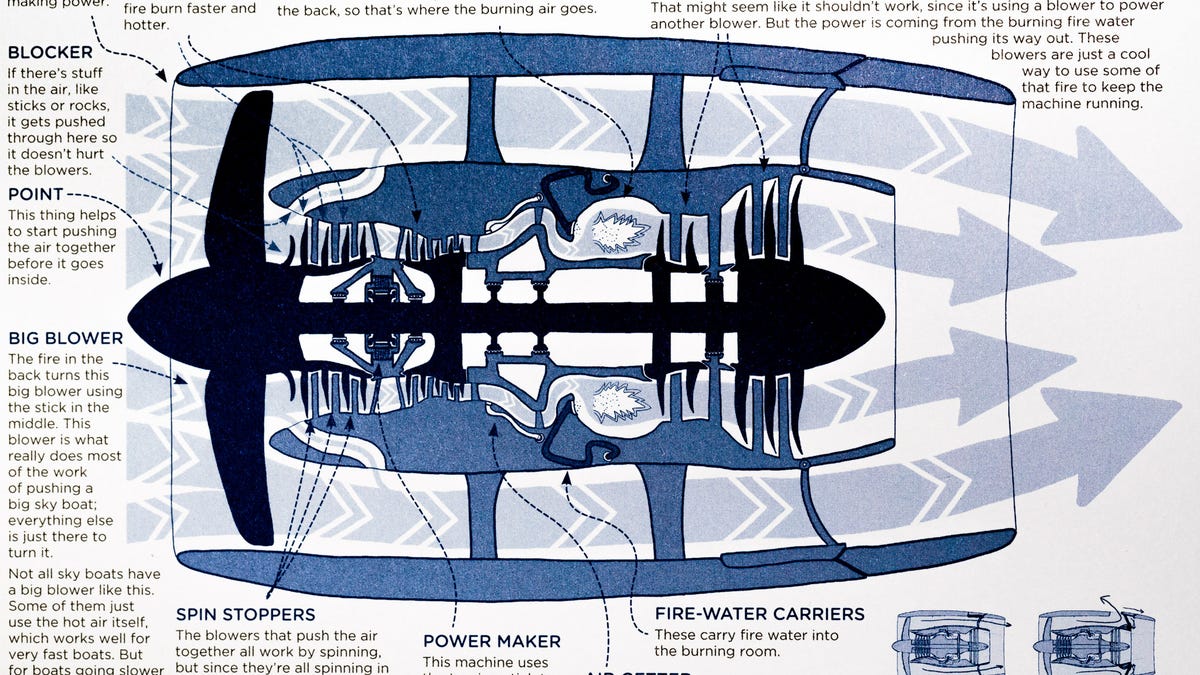'Thing Explainer': Fun if you enjoy puzzles, annoying if you just want to learn
Cartoonist and author Randall Munroe's latest book details science and technology with only a 1,000-word vocabulary. That limits its appeal, but the book is fun for those who already know the basics.
Science and technology subjects can be daunting in part because of the unfamiliar vocabulary. But what would happen if the world's most complicated subjects were described only with the simplest words?
You'd get Randall Munroe's new book, "Thing Explainer." Munroe's works -- his popular XKCD online comic and last year's bestselling "What If?" book -- are clever, instructive, thought-provoking, amusingly illustrated with stick people and liberally dosed with nerdy jokes. "Thing Explainer" is all that, but it's awkward, too, if you don't take the book in the right spirit.
The book explains technical subjects with only the 1,000 most commonly used words in English, so a nuclear weapon becomes a "machine for burning cities" and a microwave oven is a "food-heating radio box." The approach strips away jargon and technical terms, but the severe language limitation also means you shouldn't think of it as a successor to Stephen Biesty's cross-section books or David Macaulay's "The Way Things Work." It might be fun to describe a porcupine as a "pointy cat," but a more straightforward book to teach kids science and technology would benefit from a bigger vocabulary. If you already understand the basics, though, as XKCD fans likely do, it's worth the $25 that publisher Houghton Mifflin Harcourt is charging.
"Thing Explainer" grew into a book from an XKCD comic that used a highly limited vocabulary to describe a Saturn V rocket. The Up Goer Five makes an appearance in the book, too.
To enjoy the book, you have to lighten up and roll with it. The stripped-down wording can be fun to puzzle out, as long as you've got the time and an Internet connection to flesh out the details. Quiz: Which element in the periodic table is "air used by doctors to make thin bright lights for cutting eyes"? Answer: krypton.
Constraints can be a good thing. Shakespeare thrived within the lilting poetic cadence of iambic pentameter, and black-and-white photography can capture moods and depth missing from color photos. The limits in "Thing Explainer" give you a fresh view on subjects, even if you already understand household plumbing and the electromagnetic spectrum.
"Thing Explainer" overall is unintimidating and engaging, with lavish blueprint-like illustrations that draw you into just about every page except the text-only US Constitution. Munroe delves into 54 subjects: smartphones, skyscrapers, warships from the age of sail, floating oil rigs, cameras, the Earth's geological history, elevators, jet engines and the Saturn V rocket -- the subject of the "Up Goer Five" XKCD comic that provided the inspiration for the book. Munroe has a gift for turning his own curiosity into your own edification.
Wondering about the mechanics of the fusion reaction at the core of the sun? "The air in the sun is trying to fall toward the center, but the light and heat keep blowing it away." How about today's transition to cameras that forsake the single-lens reflex (SLR) mirror? "The loud 'picture-taking sound' is the mirror moving out of the way to let light reach the back." Ballpoint pens? "The top side of the ball gets covered with writing water, then it rolls over and leaves the water on the paper." Cells? "Tiny bags of water you're made of." The fusion reaction that's the second stage of a thermonuclear weapon explosion? "This stuff can also burn in a run-away fire, but has to be pushed together really hard first."
Randall Munroe calls the Large Hadron Collider, a particle accelerator that smashes protons into each other, a "big tiny thing hitter. This is a cross section of the particle accelerator.
There are abundant Easter eggs hidden in the details, too. The map of the sky shows where Frank Herbert's book "Dune" takes place ("star where people live in a made-up story named after a big pile of sand"). The data center is packed with computers, including a 1984-era Macintosh branded with Apple's logo and the name "FruitCircle." The microwave oven's array of buttons -- "lots of other controls they always add even though no one ever wants them" -- include options for hair, plastic food, leaves and "share on face book."
Munroe succeeded in making something different in the world of tech texts. We'll probably never know if a more straightforward book would have brought Munroe's talents to a broader audience, but for those already in the know, "Thing Explainer" is fresh and amusing.


